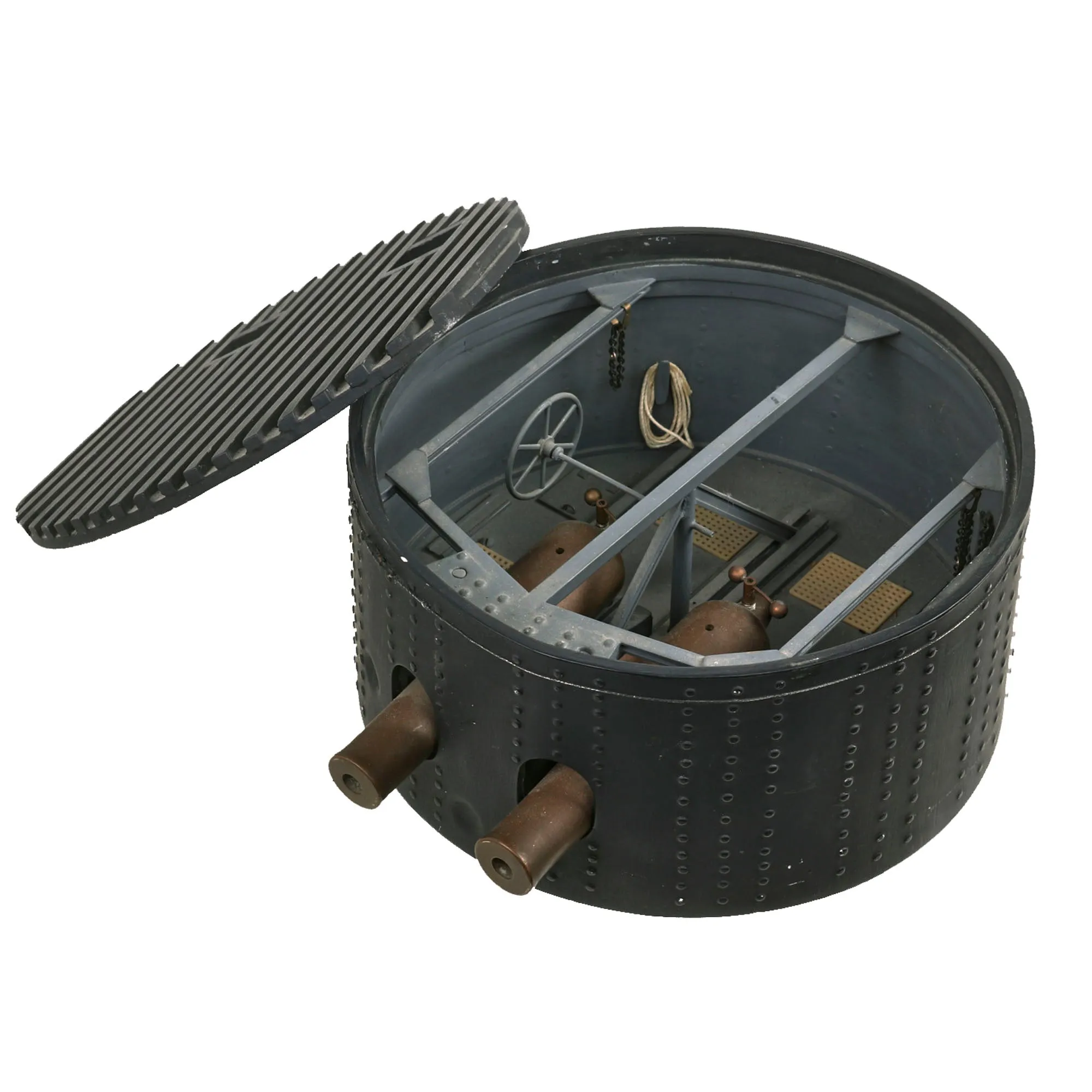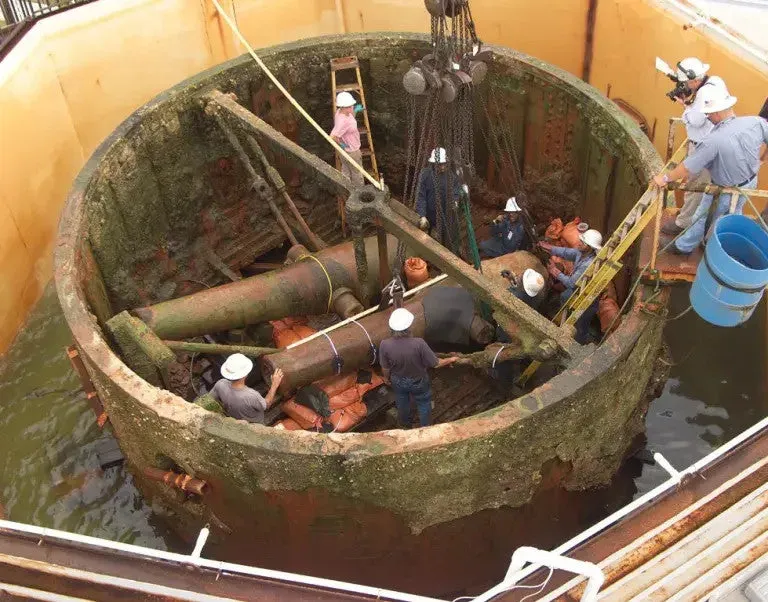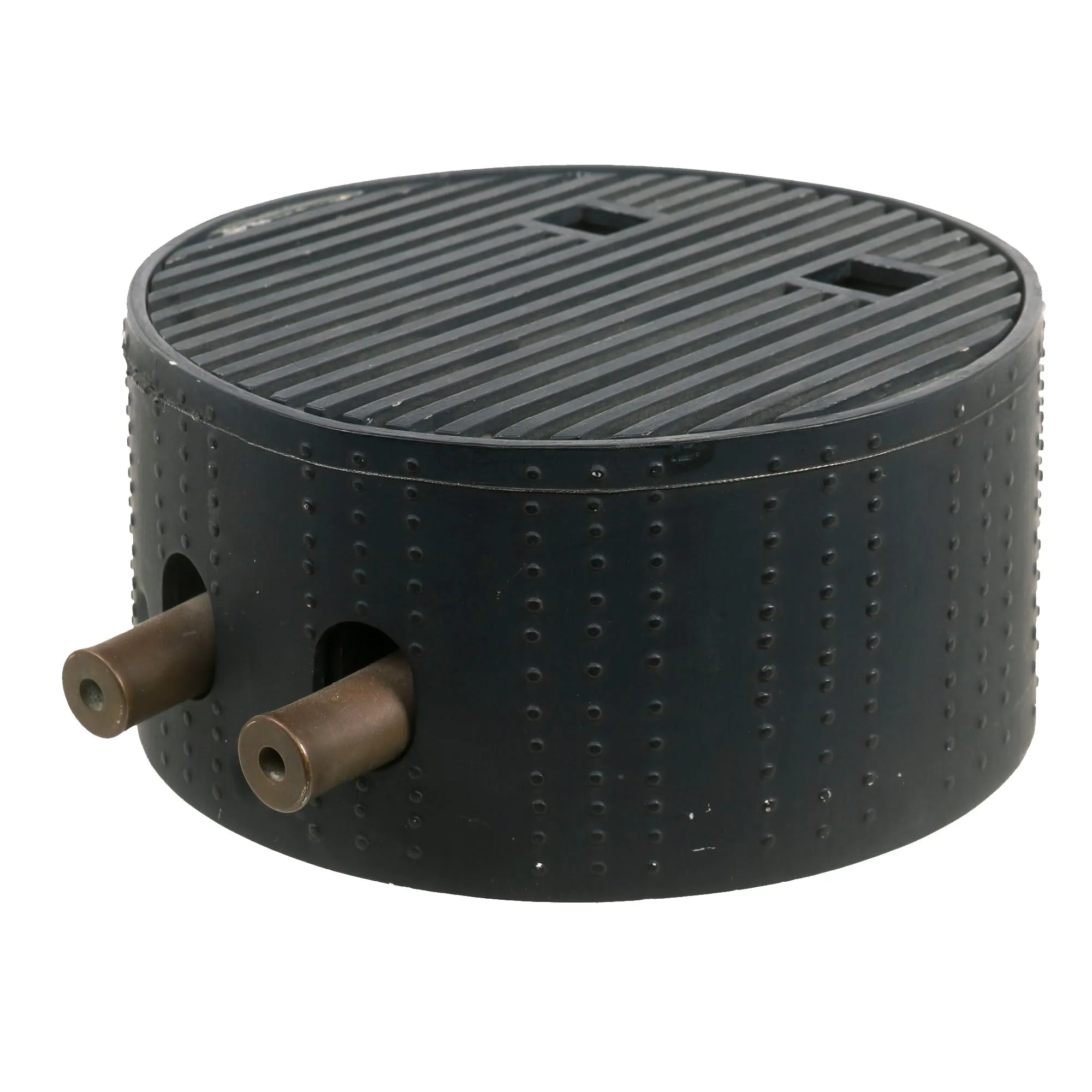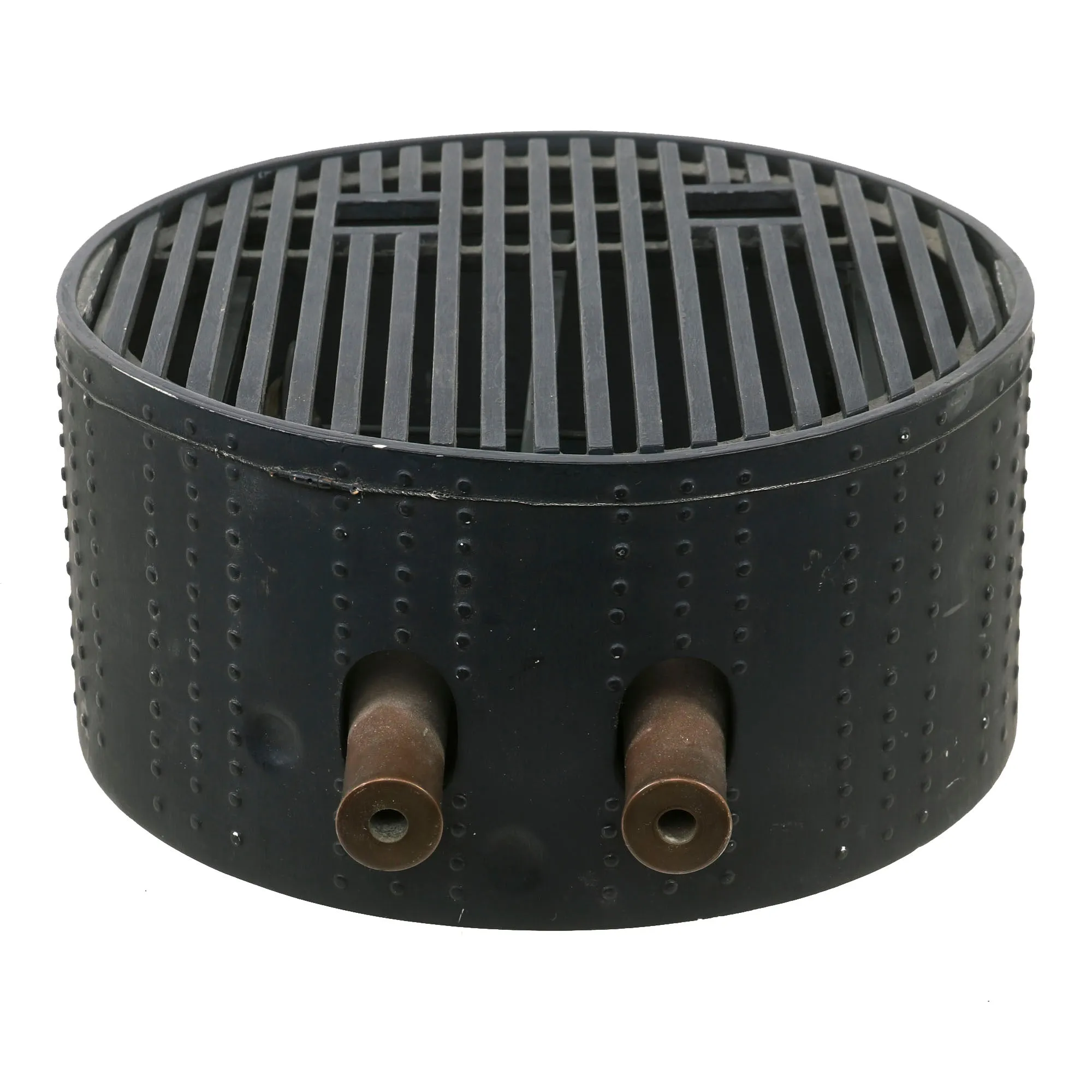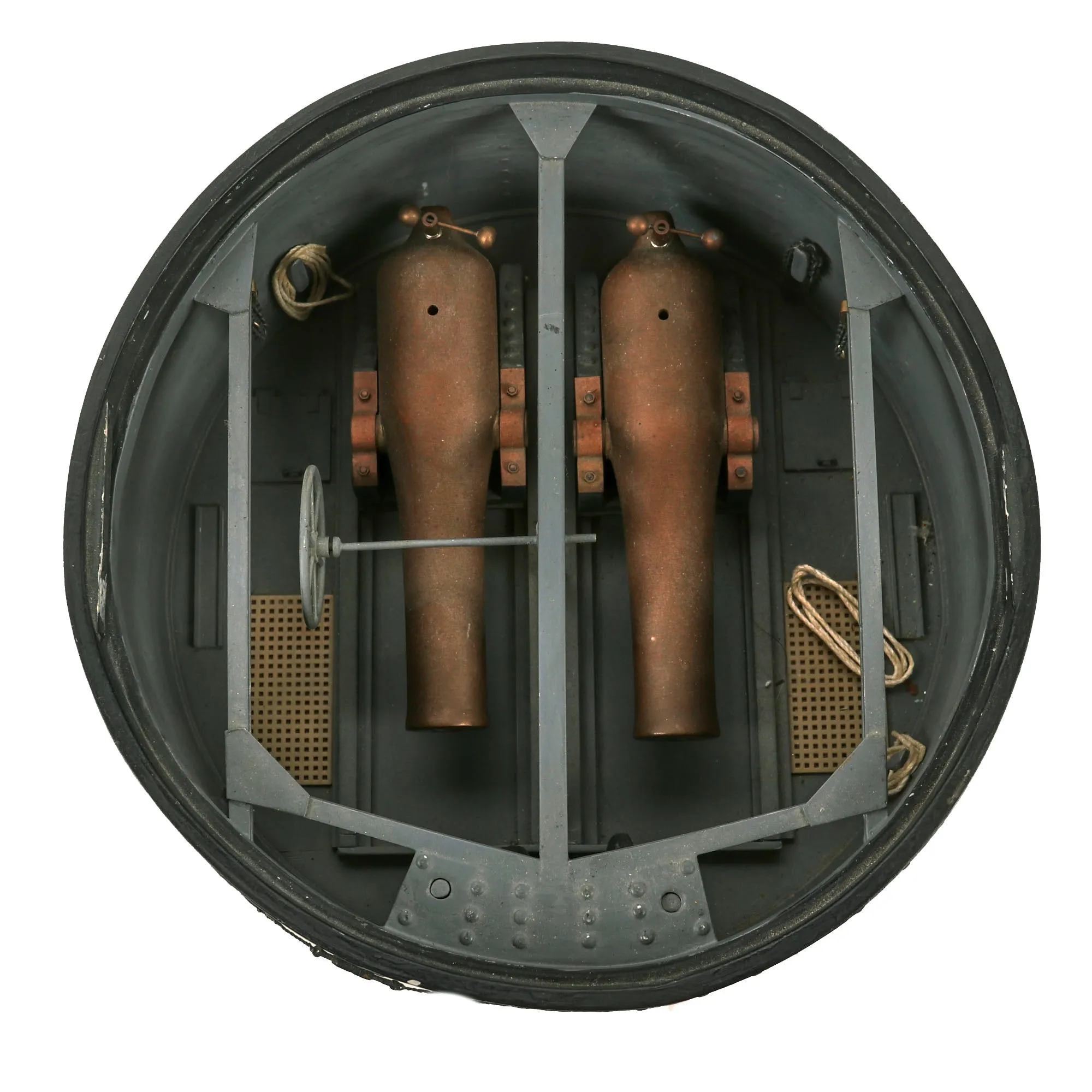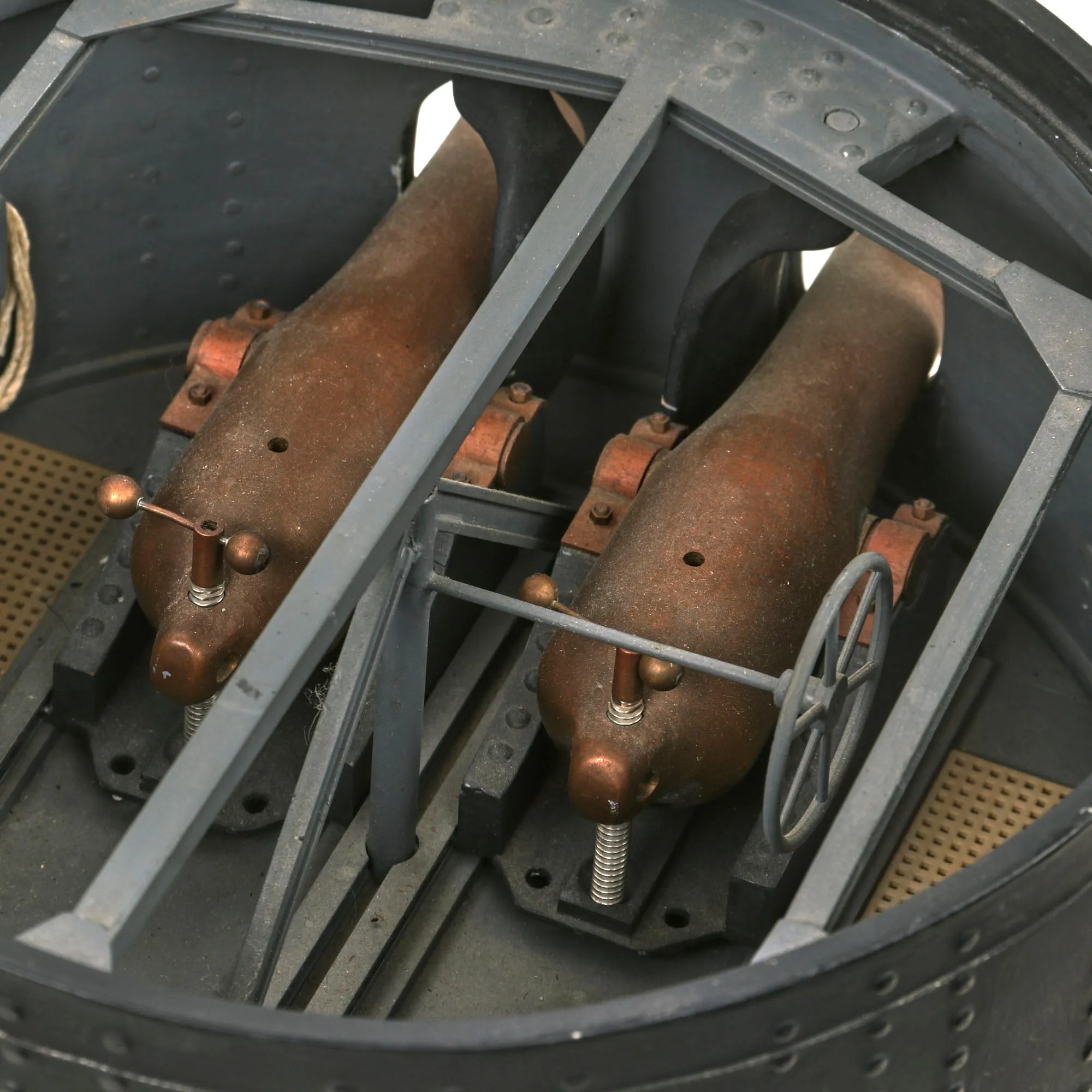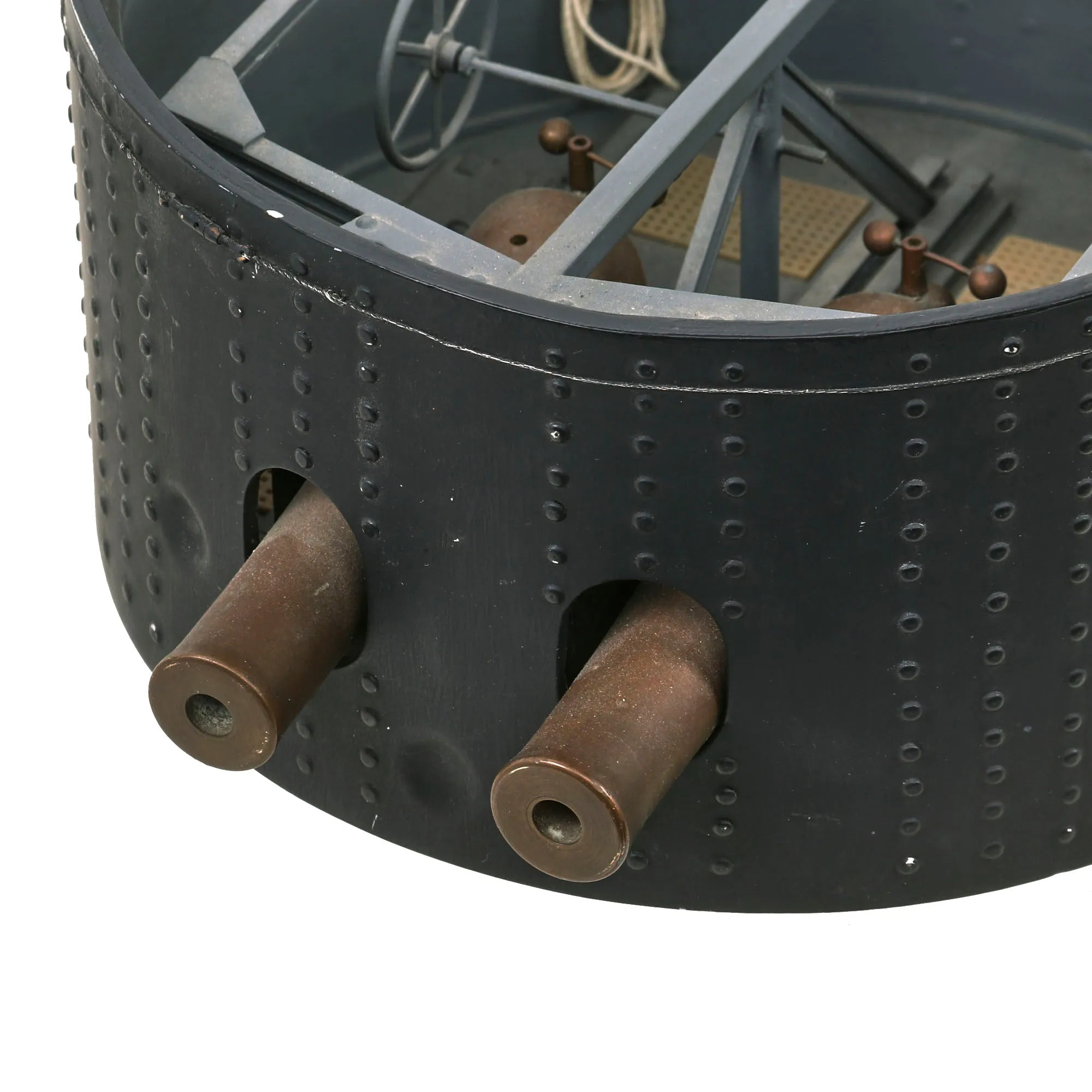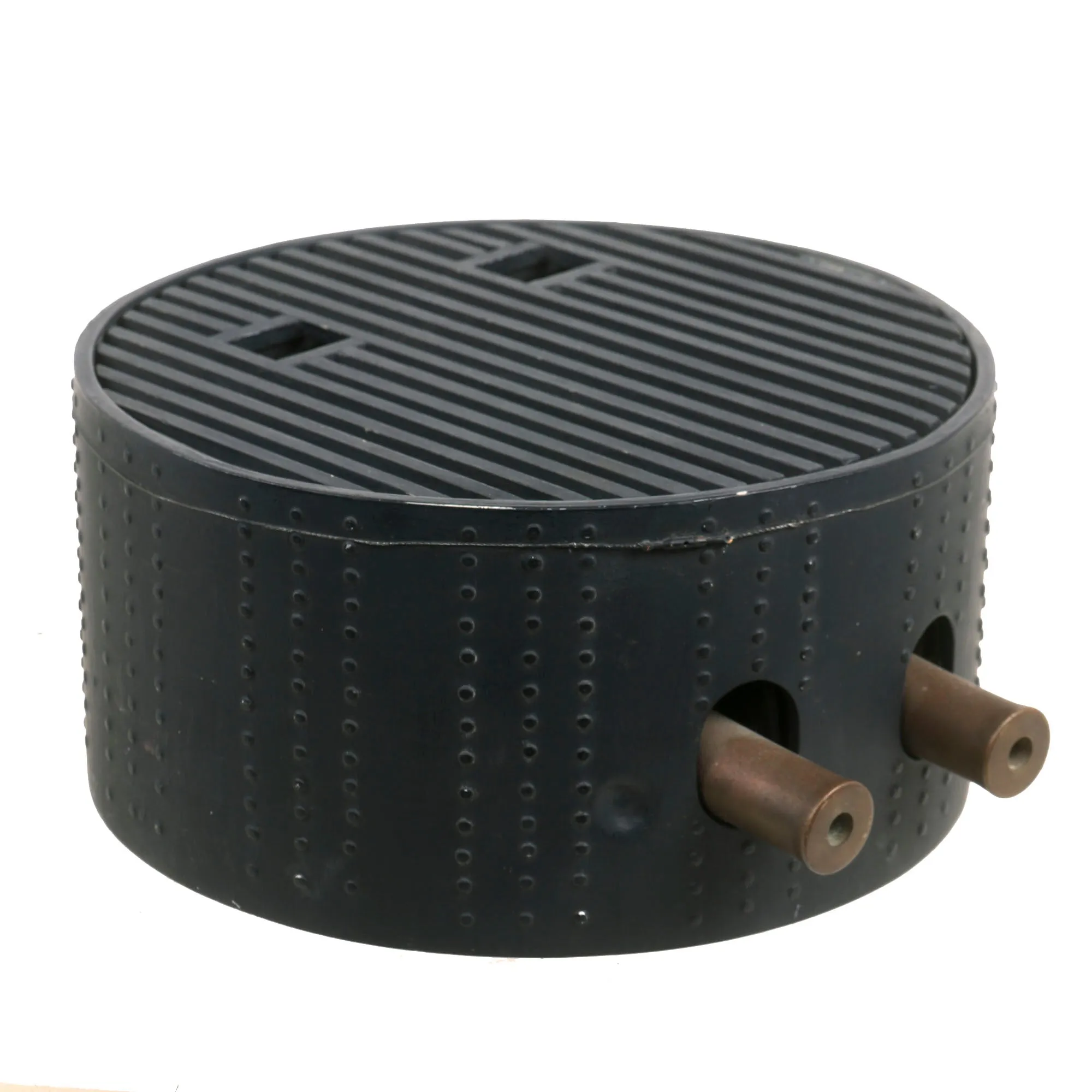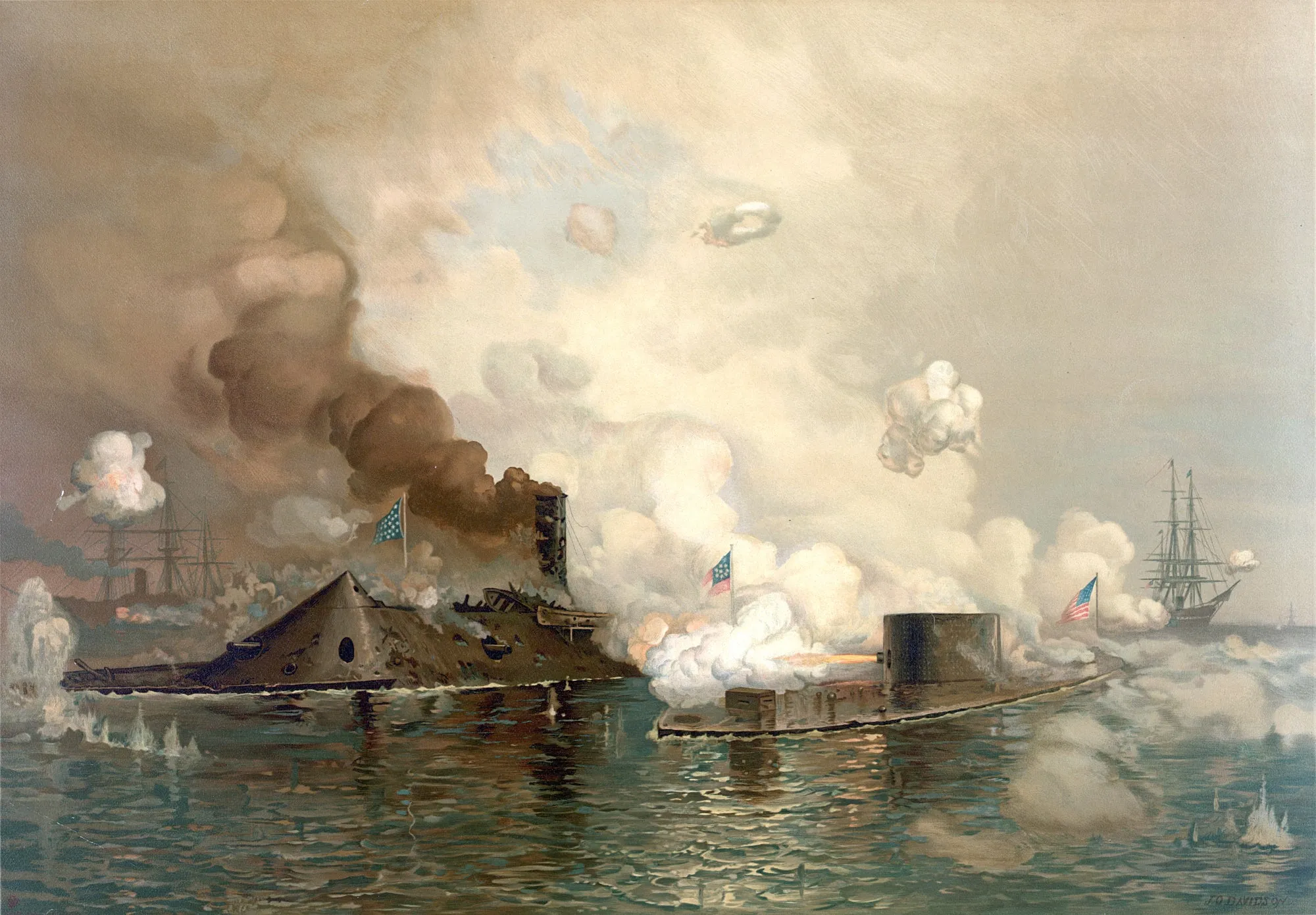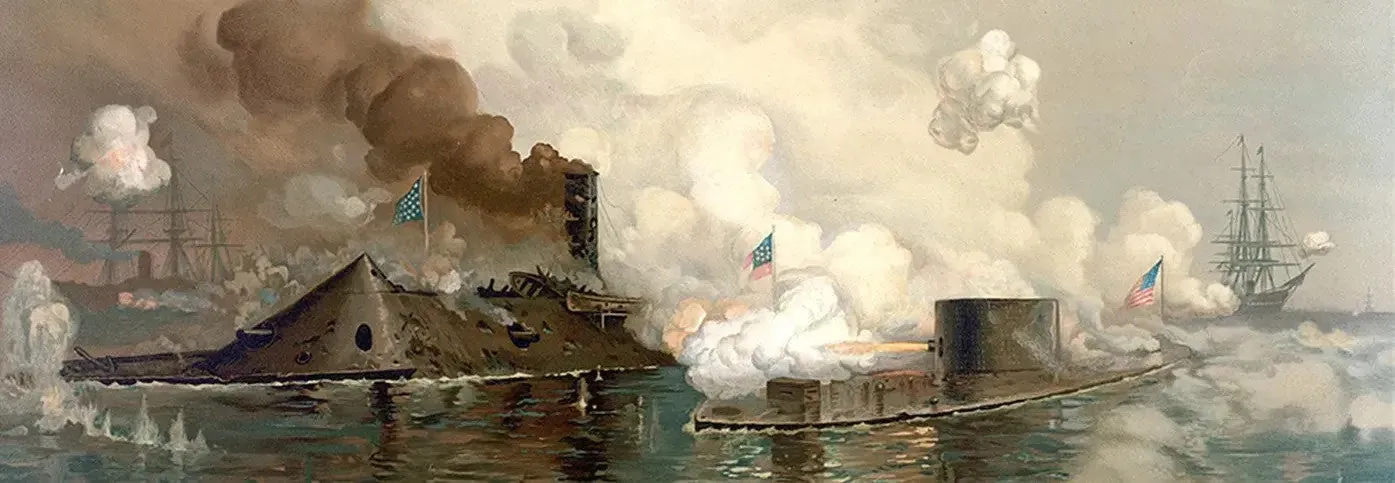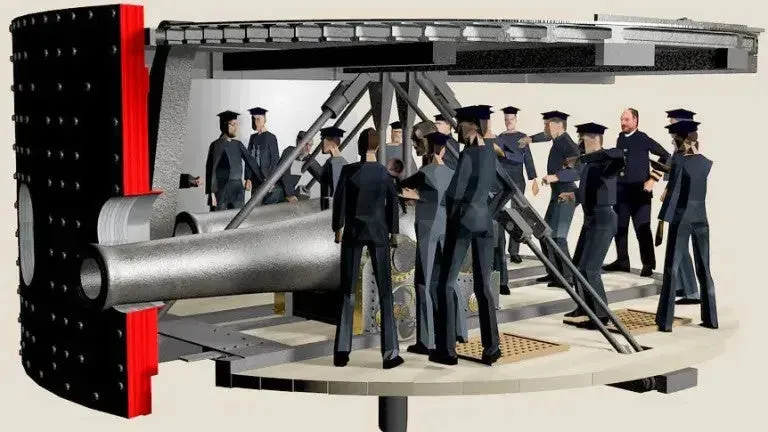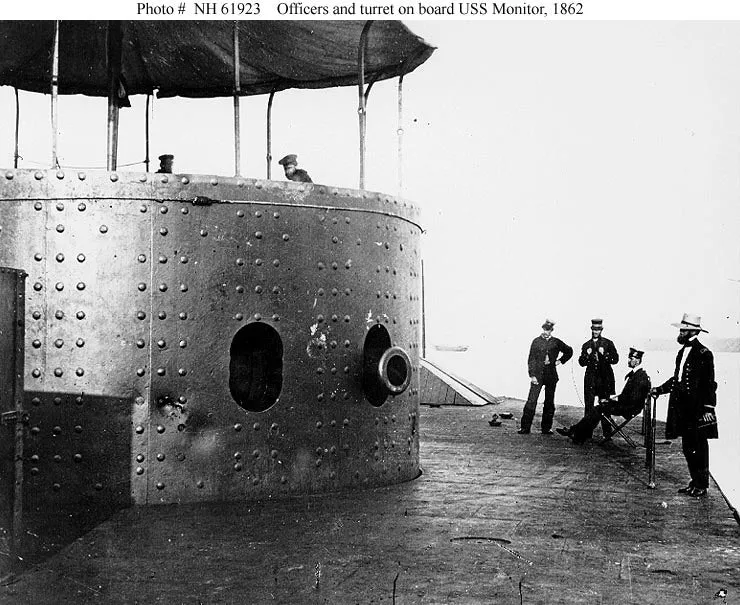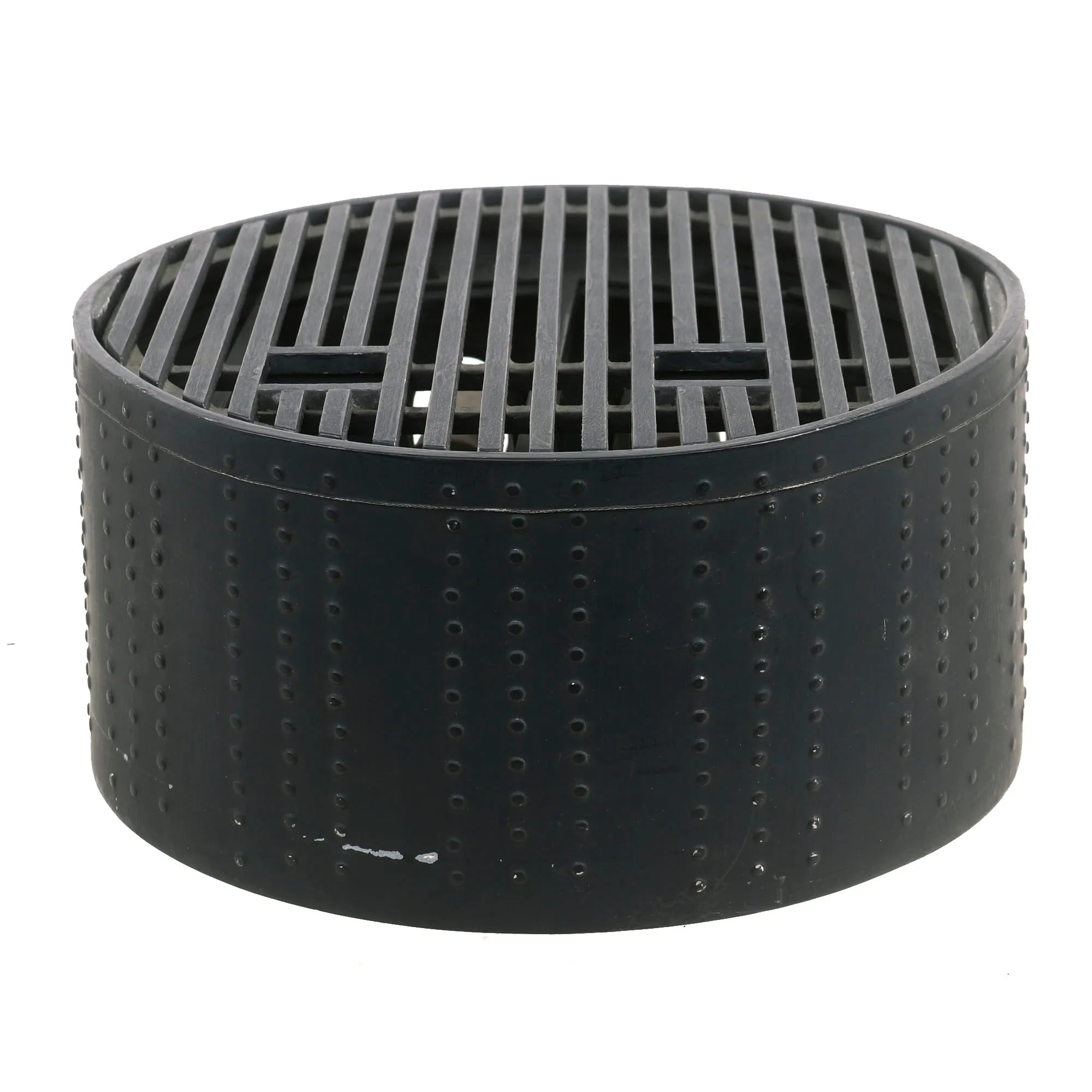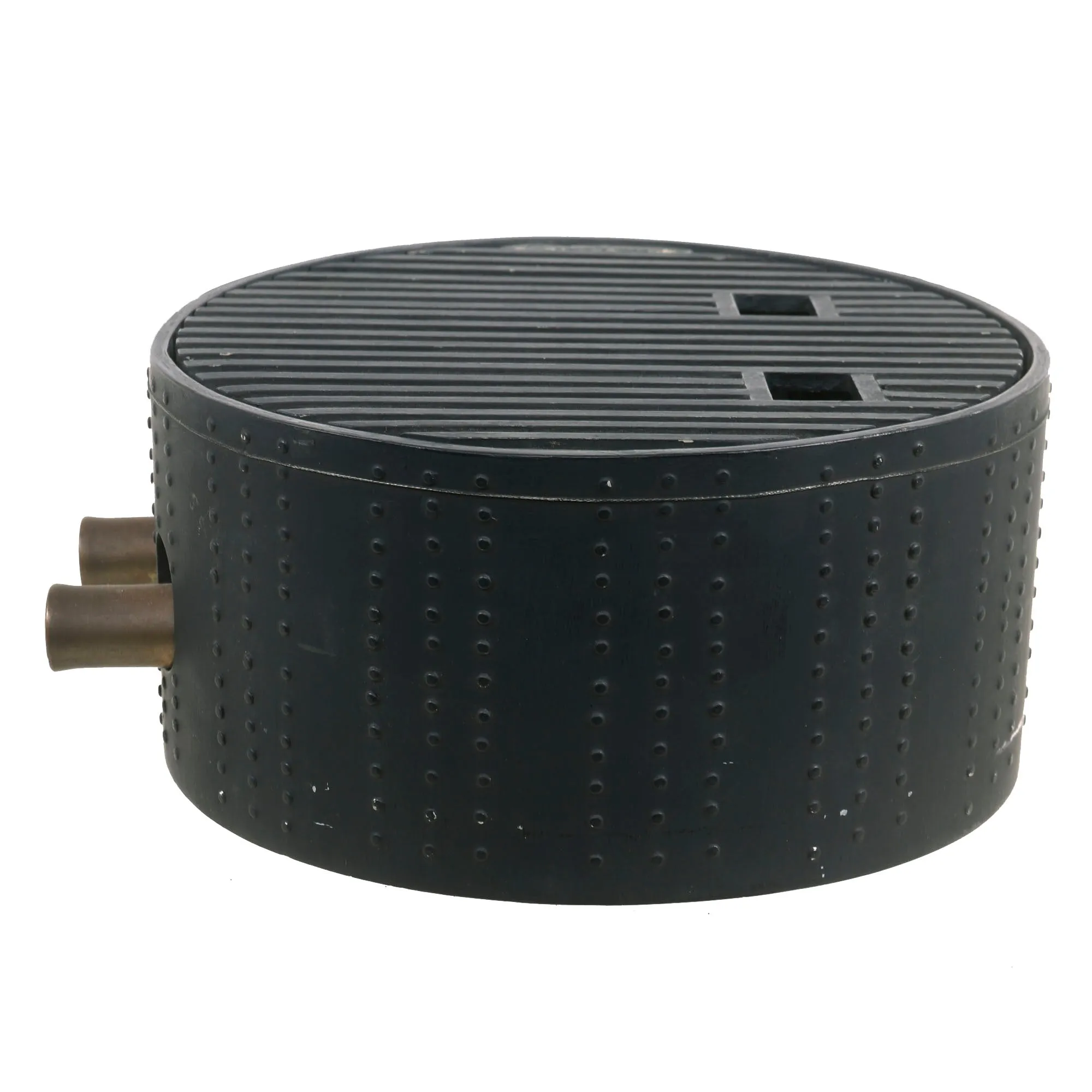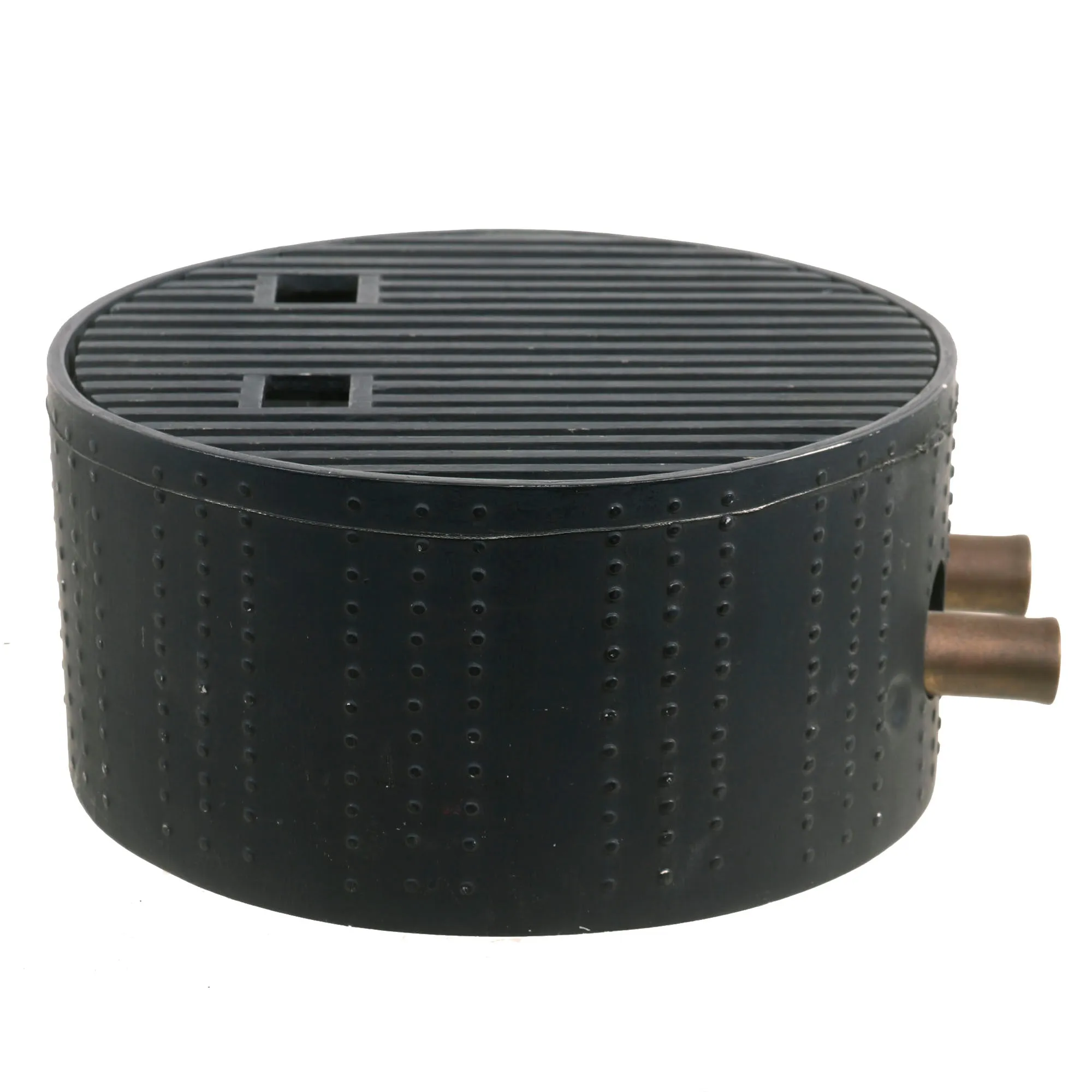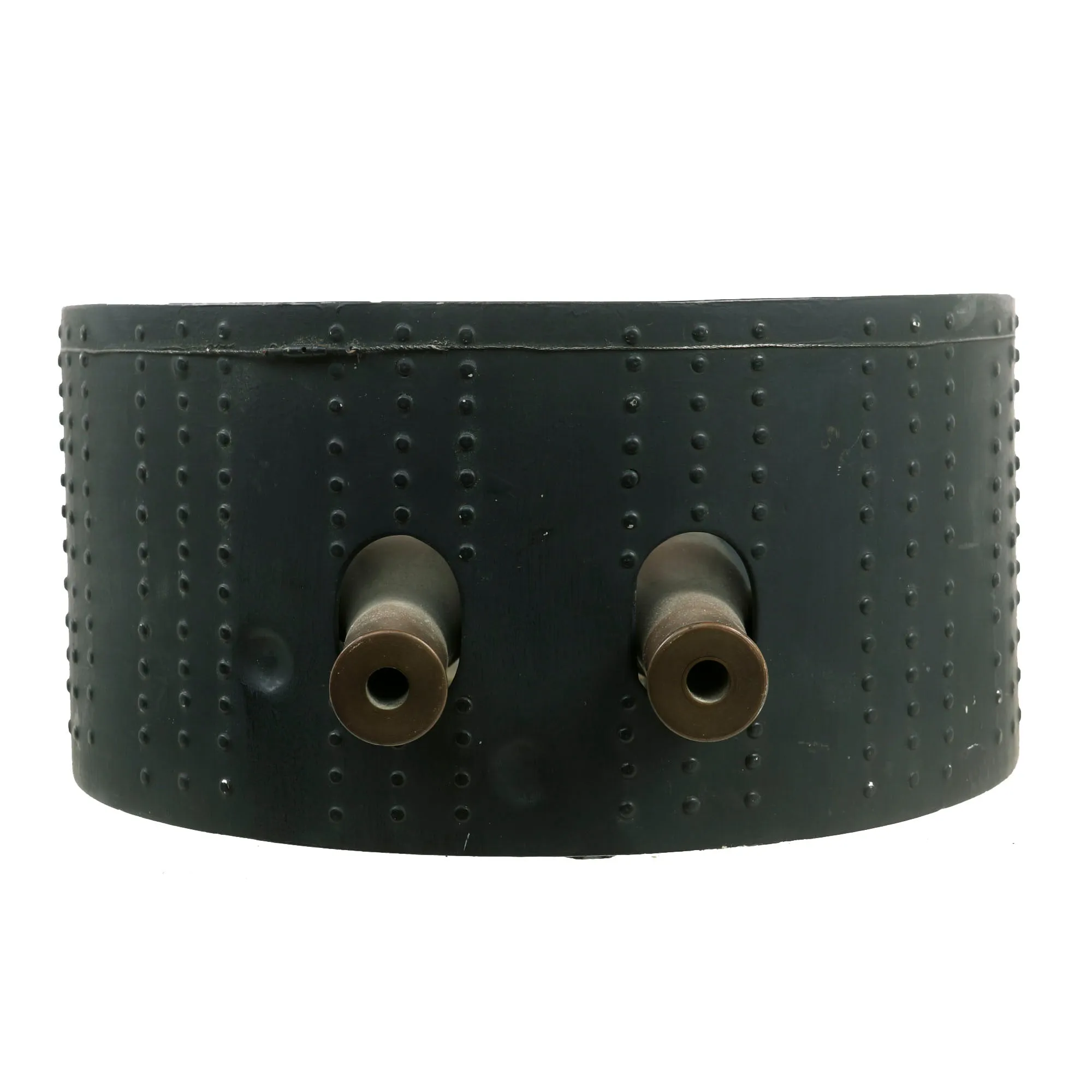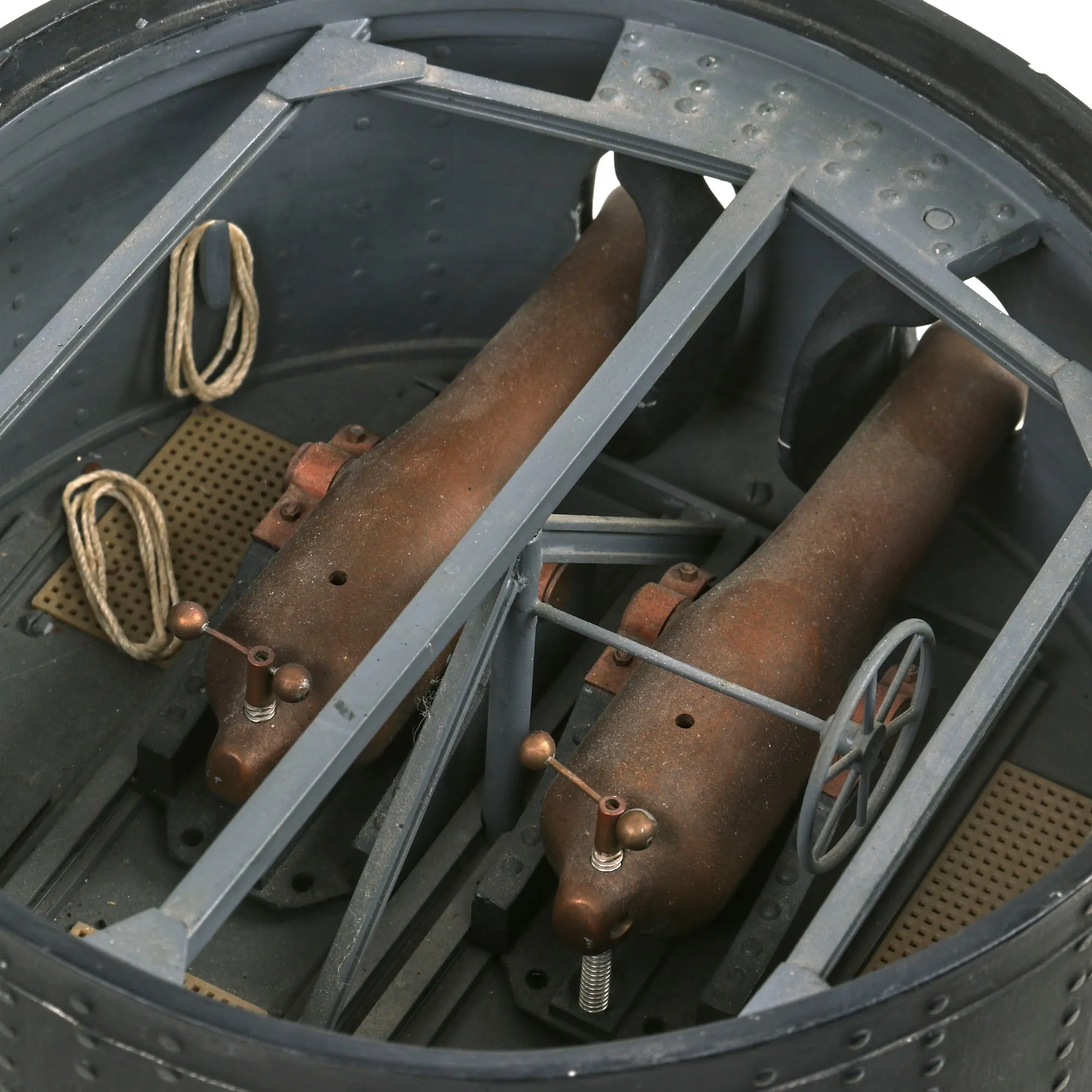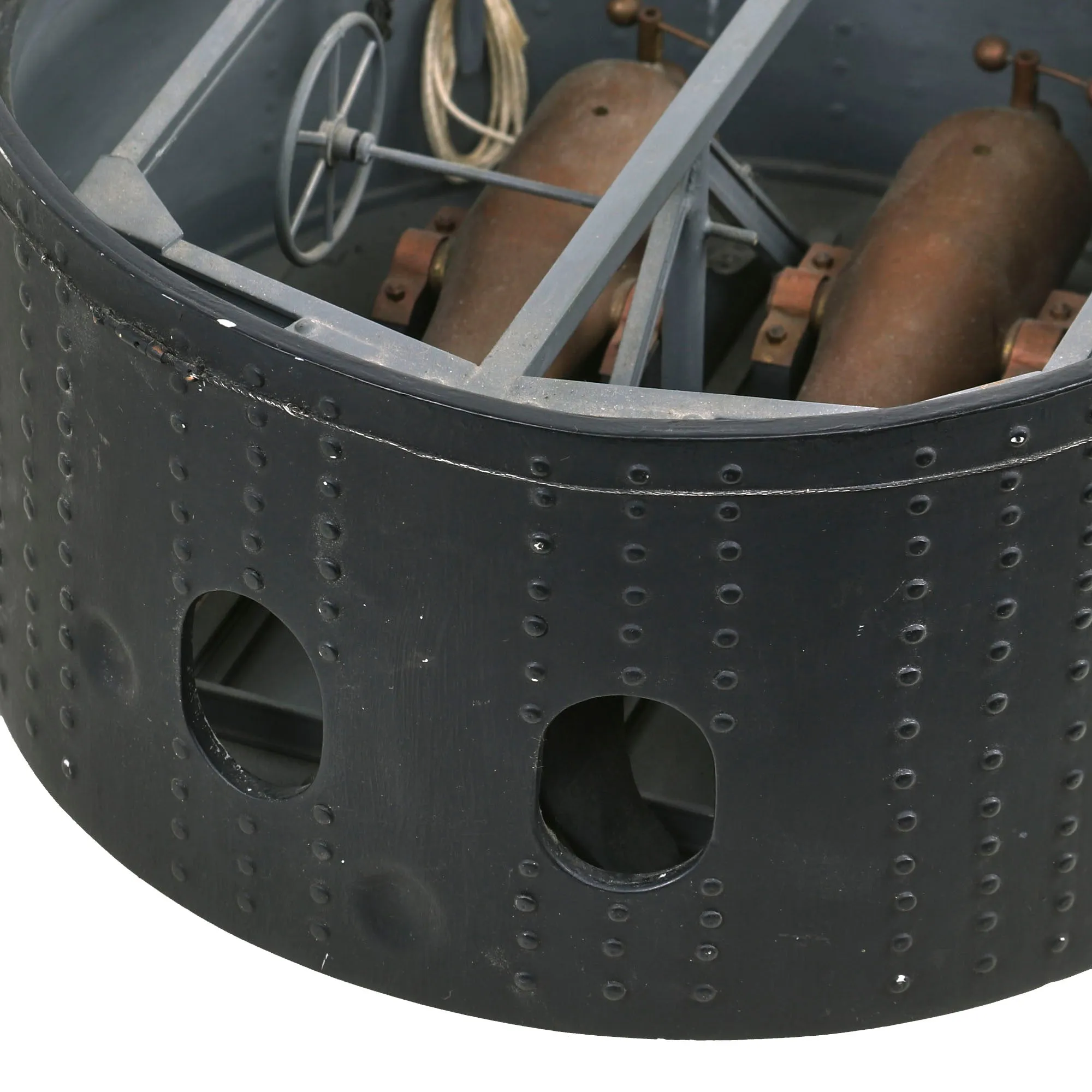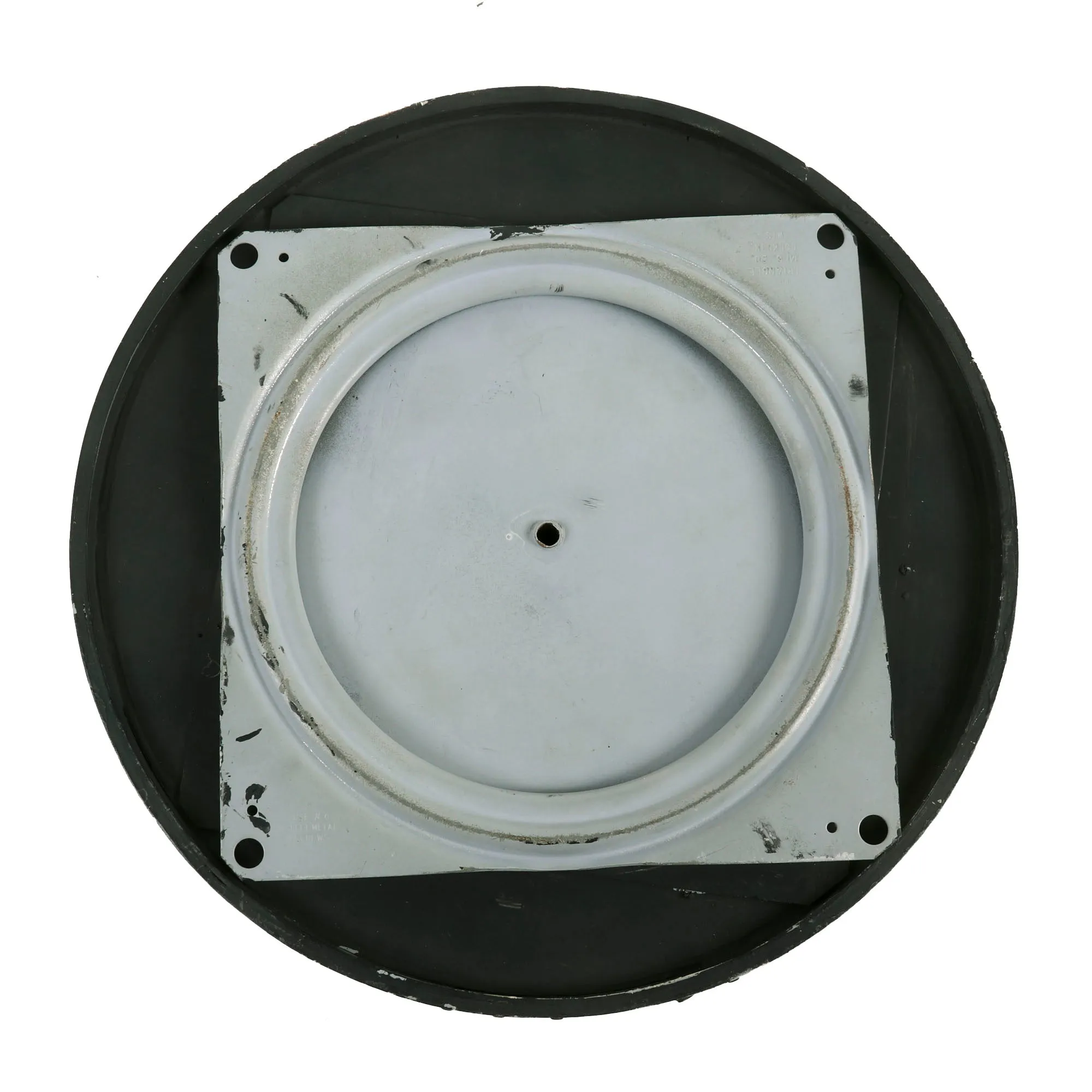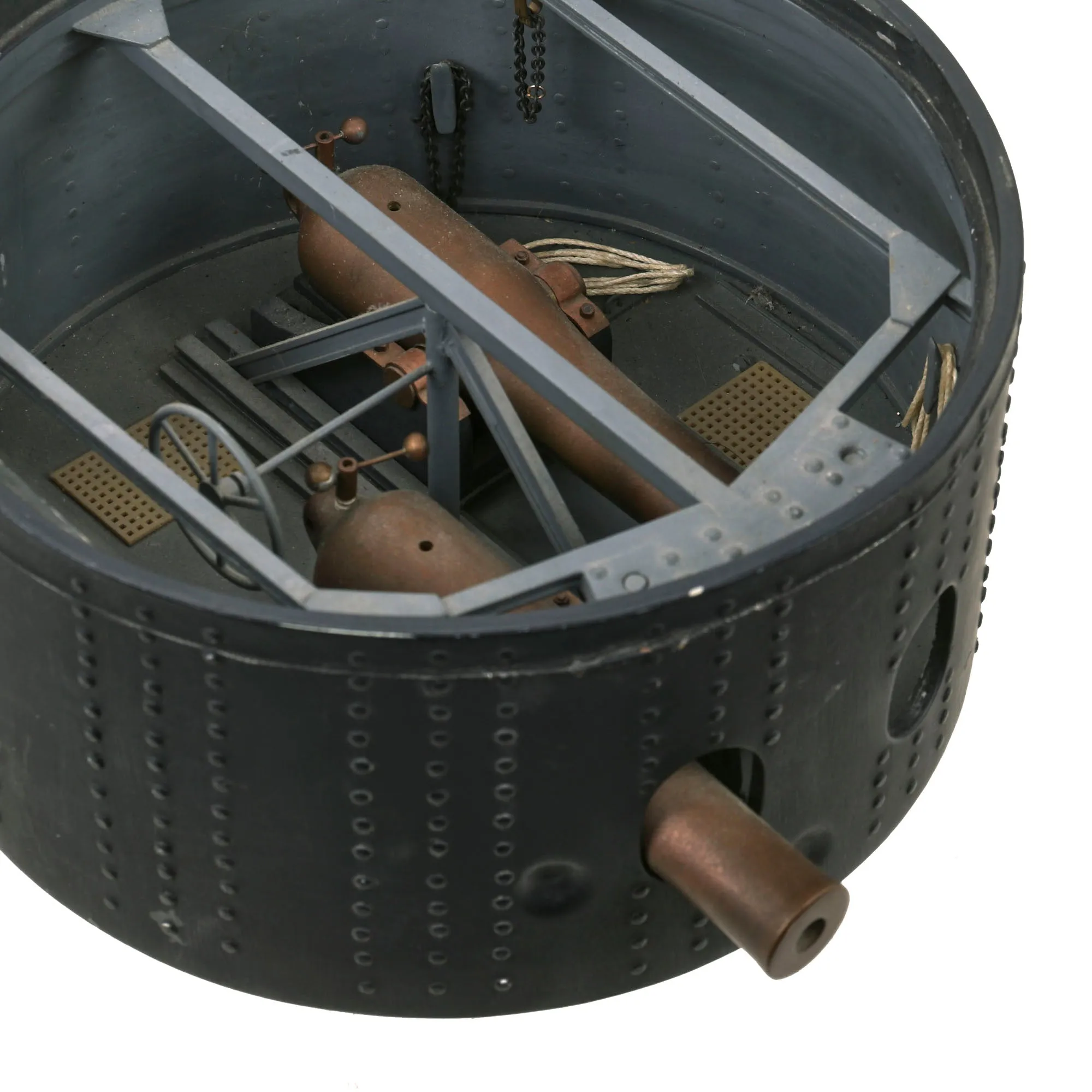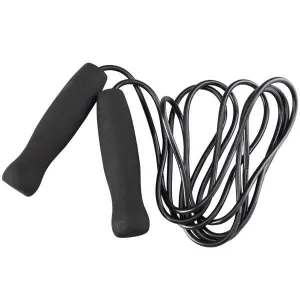Contemporary Model: Only One Available. This is an incredibly detailed model of the famed US Civil War’s Ironclad Warship the USS Monitor. This beautiful plastic and wood model was built by John Ficklen III. John graduated from the University of Georgia in 1963, and entered Naval Flight training at Pensacola, FL. He flew Anti-Submarine Warfare Helicopters during his active duty. Following his Naval career, John joined Eastern Airlines, where he flew for 23 years retiring as a Captain. During his flight career, John was also recognized as an award-winning model ship and model airplane builder and a member of the International Plastic Modelers Society. John is also known for his detailed aviation art, which included numerous limited edition prints, personally signed by historical pilots, ranging from WWI to Vietnam era. Ficklen's models and his artwork are in private collections and museums throughout the country.
This 8 ⅝” x 4 ½” turret is in spectacular condition and is still on the original rotating base. We are not certain if this was actually attached to a complete model of the USS Monitor or was just used as a display piece. All original pieces do appear to be present, even down to the ropes and chains attached to the side walls of the interior. The brass cannons are impeccably made and still have an adjustable elevation lever on each one. All paint has been mostly retained and the model itself does appear to have been cared for.
This is a masterfully crafted model, perfect for the Civil War collector or model collector! Comes more than ready for further research and display.
USS Monitor
USS Monitor was an ironclad warship built for the United States Navy during the American Civil War and completed in early 1862, the first such ship commissioned by the Navy. Monitor played a central role in the Battle of Hampton Roads on 9 March under the command of Lieutenant John L. Worden, where she fought the casemate ironclad CSS Virginia (built on the hull of the scuttled steam frigate USS Merrimack) to a stalemate. The design of the ship was distinguished by its revolving turret, which was designed by American inventor Theodore Timby; it was quickly duplicated and established the monitor class and type of armored warship built for the American Navy over the next several decades.
The remainder of the ship was designed by Swedish-born engineer and inventor John Ericsson, and built in only 101 days in Brooklyn, New York on the East River beginning in late 1861. Monitor presented a new concept in ship design and employed a variety of new inventions and innovations in ship building that caught the attention of the world. The impetus to build Monitor was prompted by the news that the Confederates were building an iron-plated armored vessel named the Virginia in the old Federal naval shipyard at Gosport, near Norfolk, that could effectively engage the Union ships blockading Hampton Roads harbor and the James River leading northwest to Richmond (capital of the Confederacy). They could ultimately advance unchallenged on Washington, D.C., up the Potomac River and other seacoast cities. Before Monitor could reach Hampton Roads, the Confederate ironclad had already destroyed the sail frigates USS Cumberland and USS Congress and had run the steam frigate USS Minnesota aground. That night, Monitor arrived and, just as Virginia set to finish off Minnesota and St. Lawrence on the second day, the new Union ironclad confronted the Confederate ship, preventing her from wreaking further destruction on the wooden Union ships. A four-hour battle ensued, each ship pounding the other with close-range cannon fire, although neither ship could destroy or seriously damage the other. This was the first battle fought between armored warships and marked a turning point in naval warfare.
The Confederates were forced to scuttle and destroy Virginia as they withdrew in early May 1862 from Norfolk and its naval shipyard, while Monitor sailed up the James River to support the Union Army during the Peninsula Campaign under General-in-Chief George B. McClellan. The ship participated in the Battle of Drewry's Bluff later that month, and remained in the area giving support to General McClellan's forces on land until she was ordered to join the Union Navy blockaders off North Carolina in December. On her way there, she foundered while under tow during a storm off Cape Hatteras on the last day of the year. Monitor's wreck was discovered in 1973 and has been partially salvaged. Her guns, gun turret, engine, and other relics are on display at the Mariners' Museum in Newport News, Virginia, a few miles from the site of her most important military action.




